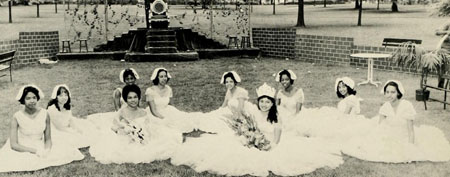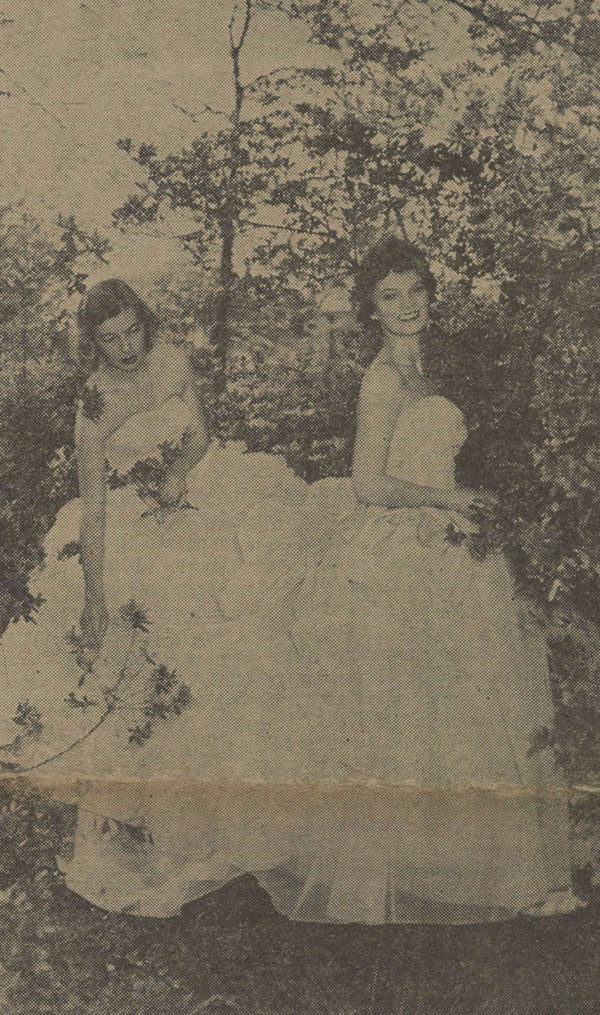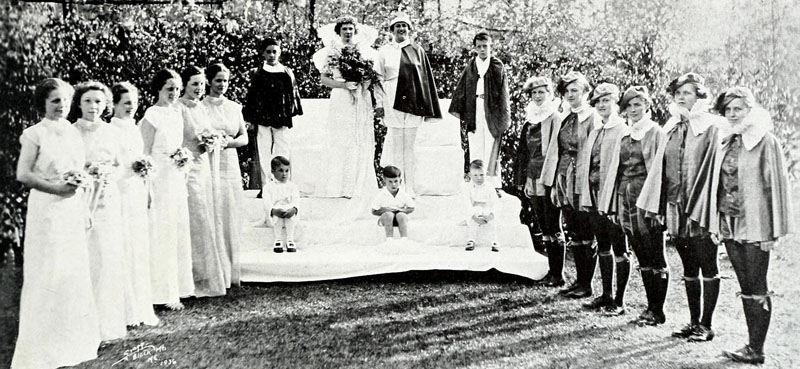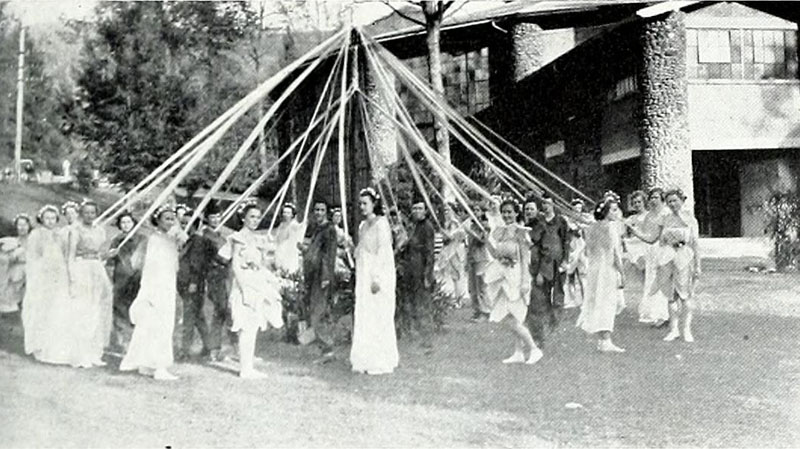Just in time for their 50th! reunion, the 1972 Montreat College (then known as Montreat-Anderson College) yearbook, the 1972 Walrus Figleaf, is now on DigitalNC, joining many other past yearbooks, student newspapers, and other materials from the school. The yearbook is a work of art, both photography and drawing, and fun to look through even if you’re not celebrating your 50th reunion this year.
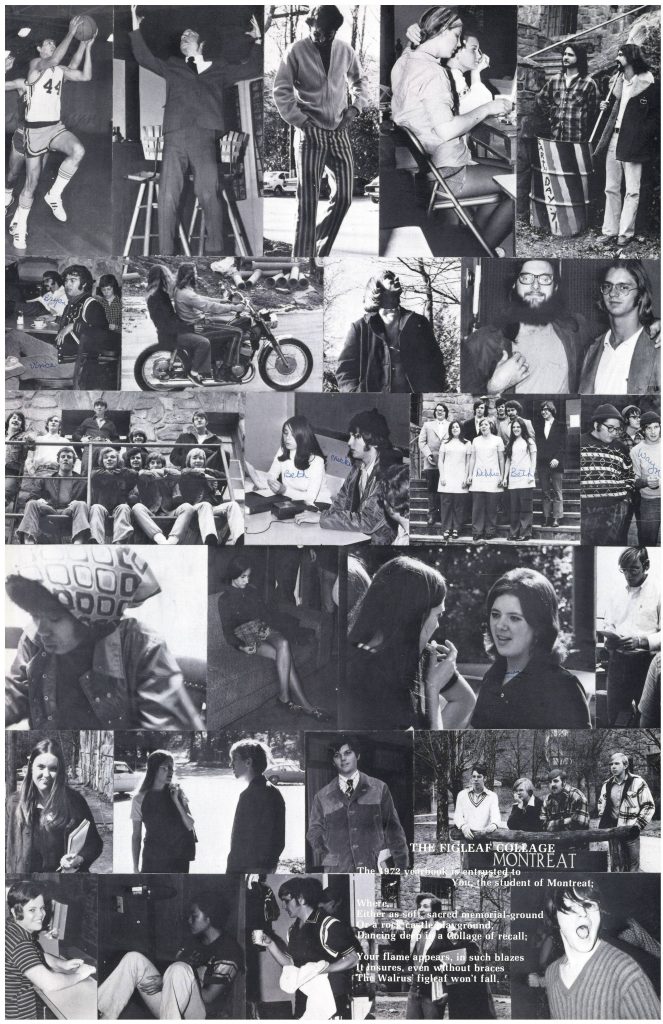
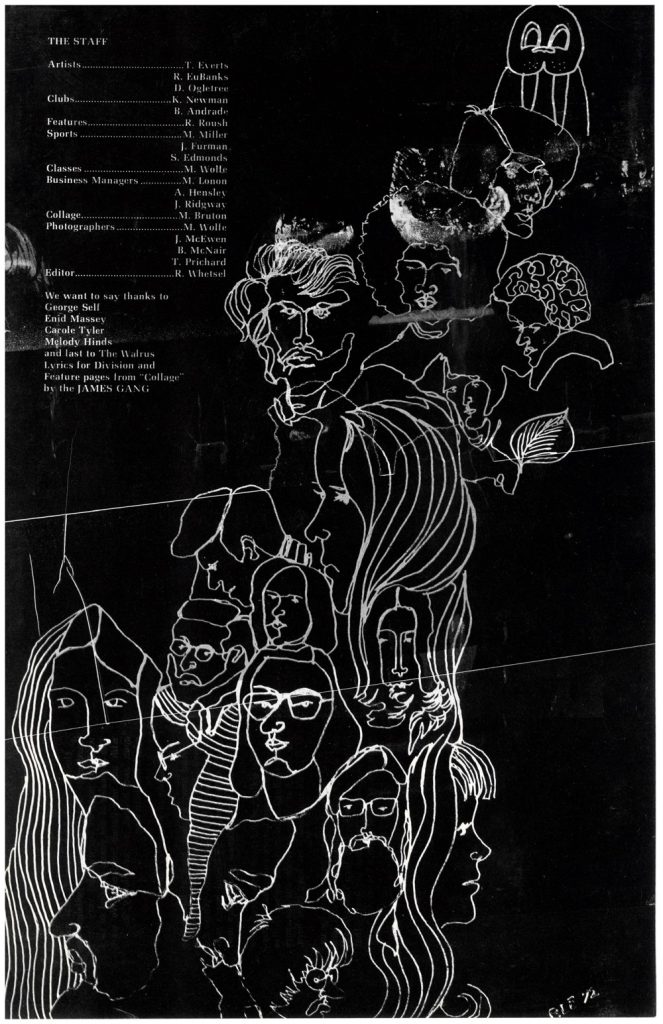
A reminder to all partners – even if we haven’t worked with you in a while, we at DigitalNC are always happy to fill in materials gaps when more are found! To view more yearbooks from around North Carolina, visit our North Carolina Yearbooks section of our site. To learn more about Montreat College, visit their website here.
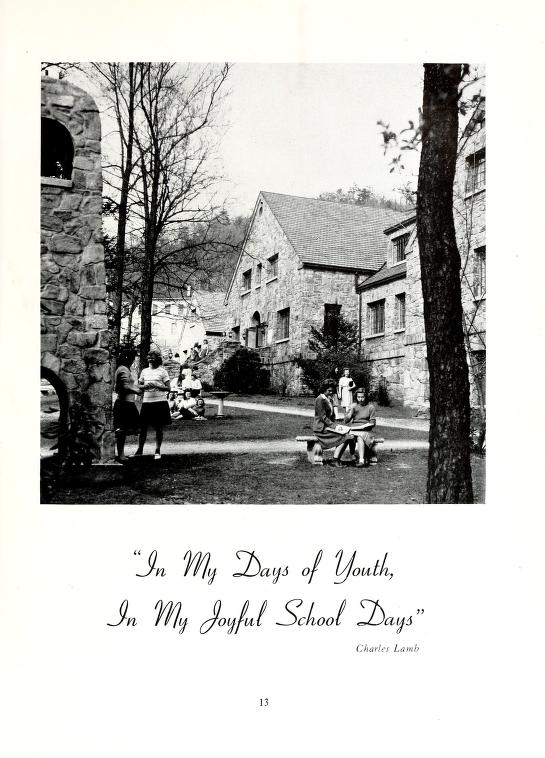
Student yearbooks from Montreat College are now available online at DigitalNC.org. There are sixty-seven volumes, dating from 1925 to 1994, when the school stopped publishing a yearbook.
Mascots are a complicated phenomenon. They inspire a spectrum of reactions: ridicule, ambivalence, or fierce loyalty. With thousands of yearbooks online, all of us here at the Digital Heritage Center have probably spent more time looking at yearbooks than anyone else you’re likely to meet. Mascots are a common theme.
I’ve been working on today’s post for quite some time; unable to find a history or comprehensive list of mascots in North Carolina I decided to compile one myself. So here’s a stab at a college mascot overview, drawn from yearbooks and other campus publications. Let me know what I’ve missed or gotten wrong!
Children
In the early 20th century, schools frequently chose children as mascots or sponsors, whether for a sports team or for a particular class. The earliest example we’ve found on DigitalNC is from a 1910 publication by Atlantic Christian College (now Barton College) in Wilson, which shows Elizabeth Settle Caldwell as the Senior Class sponsor.
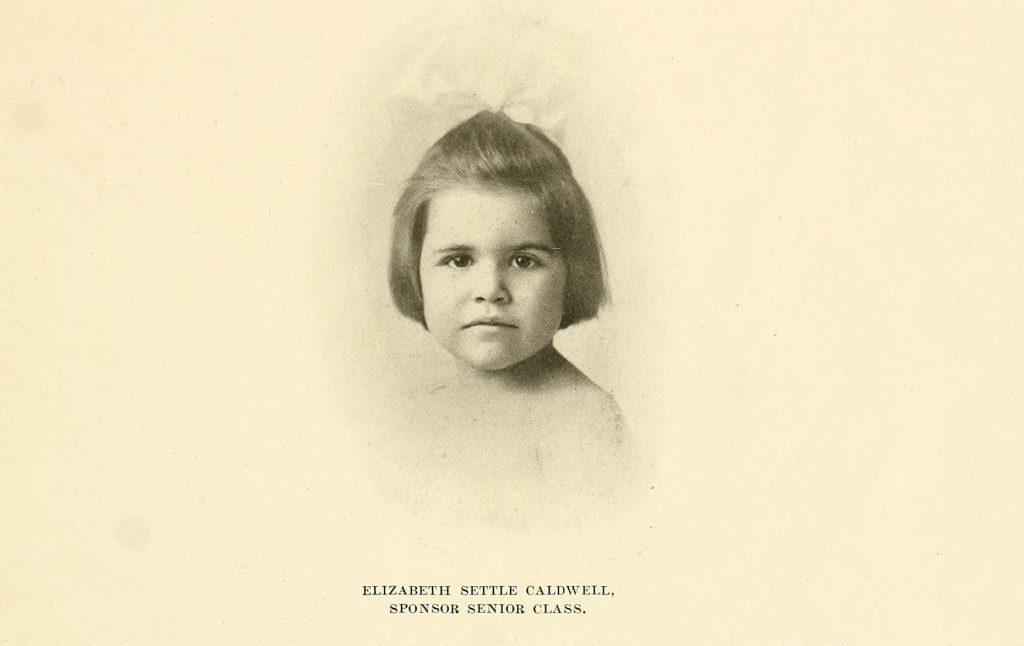
Elizabeth Settle Caldwell, First North Carolina Mascot? From the 1910 Pine Knot yearbook, Atlantic Christian College.
Ms. Caldwell was the daughter of Jesse Cobb Caldwell, the college president. From what we’ve been able to tell, children mascots were frequently younger siblings of students, teachers, or others associated with the school. Students mention that Ms. Caldwell brought “solace to many a lonely, homesick heart” and this may be why children were chosen – to foster a feeling of family and comfort among students. We’ve seen several references to mascots being elected or being chosen through competition, although what this might be we haven’t been able to discover. The trend of choosing children as mascots seems to continue through the 1960s. The latest one we found is Dawn, the Senior Class mascot at Peace College (now William Peace University) in 1966.
Animals
Animal mascots span schools across the state, whether it’s Rameses at UNC-Chapel Hill or WCU’s Catamount. The bulldog and different types of cats win out as most frequently adopted. Pictures of live animal mascots start to appear in yearbooks in the early 1900s, and continue today although much less frequently. For a variety of reasons, including concerns expressed by animal rights activists, schools have shifted away from actual animals to students dressing up like animals, as you’ll see later on in this post.
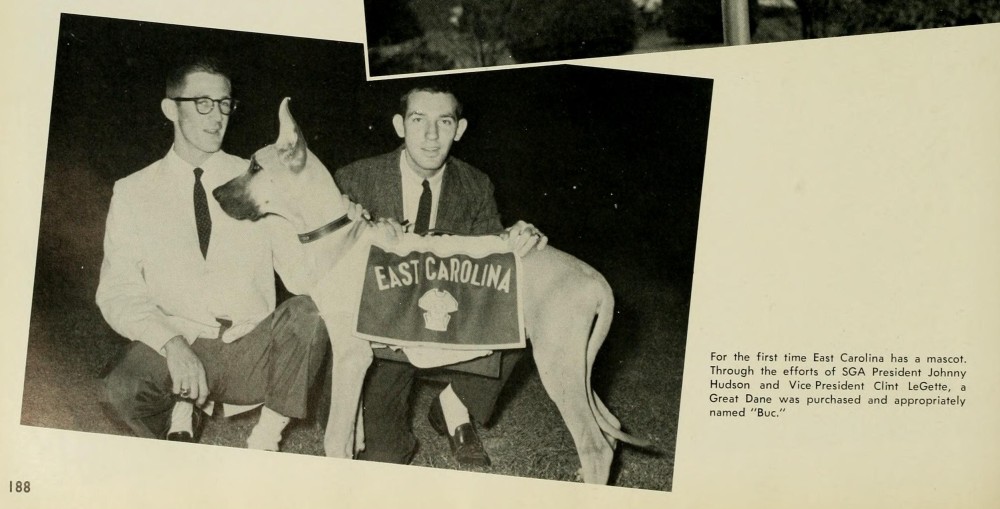
“Buc” is described here as East Carolina University’s first mascot. From the 1959 Buccaneer yearbook.
Characters
While about half of the four-year college mascots in North Carolina are animals, most of the others are characters that are historic, mythical, or extraordinary in nature. From what I’ve seen in NC yearbooks, humans dressing up as the school mascot really got traction in the 1960s. Initially, these costumes weren’t the fuzzy creations we think of today, but rather less complicated ensembles where the mascot’s identity (his or her face and body) was often apparent. Yosef the Mountaineer, beloved icon of Appalachian State University, was created sometime around 1942 and looked like this in the 1960s:
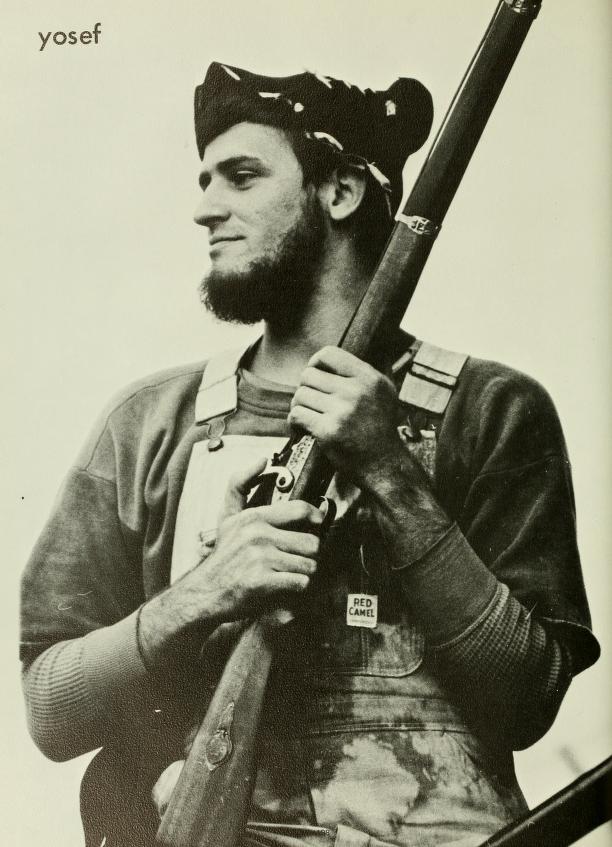
Yosef the Mountaineer, aka James Randle Tedder (we think). From the 1969 Rhododendron yearbook, Appalachian State University.
One of my favorites has to be this picture of Duke Blue Devil, from 1950:
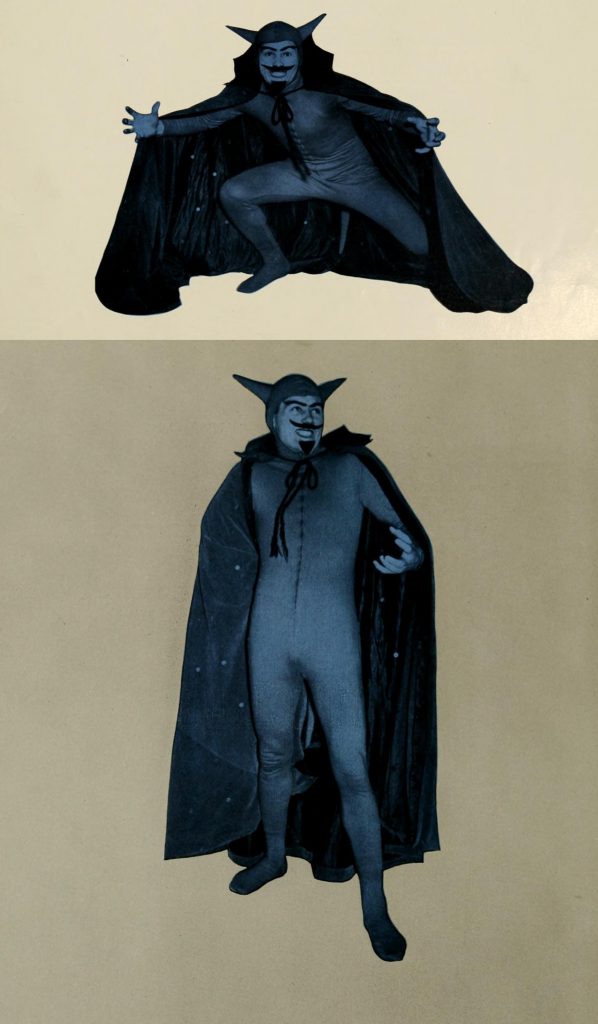
The Blue Devil. From the 1950 Chanticleer yearbook, Duke University.
Perhaps it was too hard to maintain a degree of consistency as students graduated over the years, and mascot anonymity seemed like a better idea. Whatever the reason, you start to see fuzzy, oversized costumes with gigantic headpieces in the late 1970s.
The Big Costumes
Whether animal or character, plush mascots that include a single piece body suit with a large plastic or cloth-covered head is something most Americans can identify with, thanks to professional sports. Colleges in North Carolina really embraced these costumes through the 1980s. Here’s what the UNC-Wilmington Seahawk looked like in 1987:

The Seahawk. From the 1987 Fledgling yearbook, UNC-Wilmington.
Some schools have developed multiple mascots dedicated to different audiences. It seems like the difficulty with these types of costumes is how to pull off a fierce facial expression that doesn’t come off as goofy or too scary for children. I think this picture from Davidson College sums it all up:
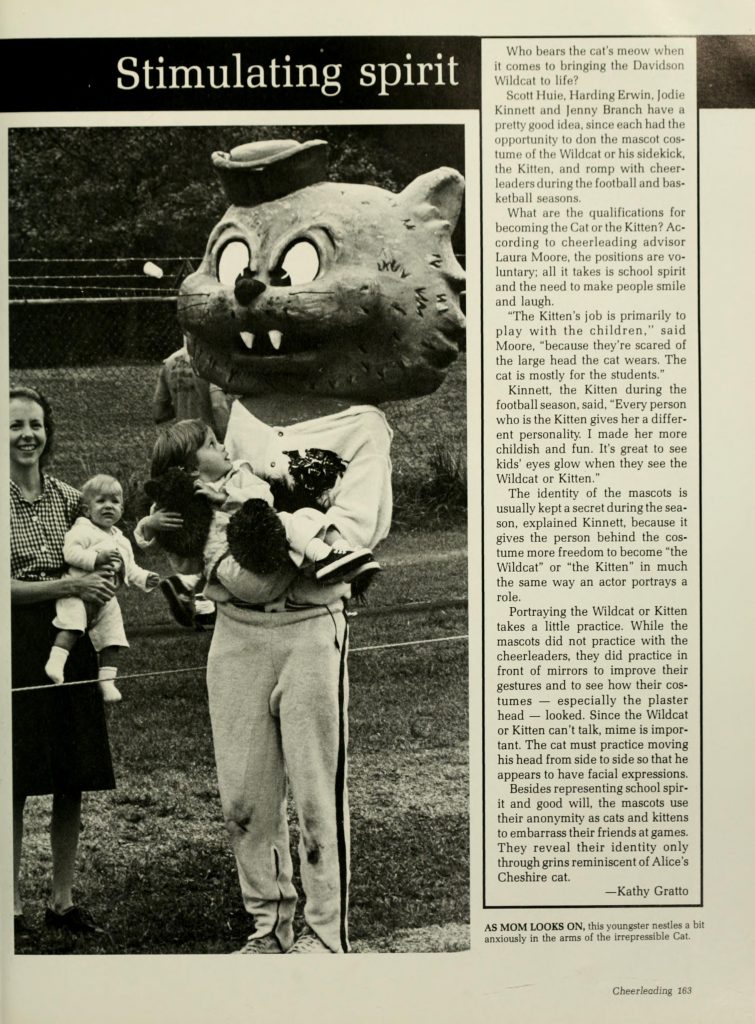
The Davidson Wildcat and … friends. From the 1983 Quips and Cranks yearbook.
I will also take this opportunity to mention a mascot that routinely makes the “wait … what?” list – the Campbell University Fighting Camels:
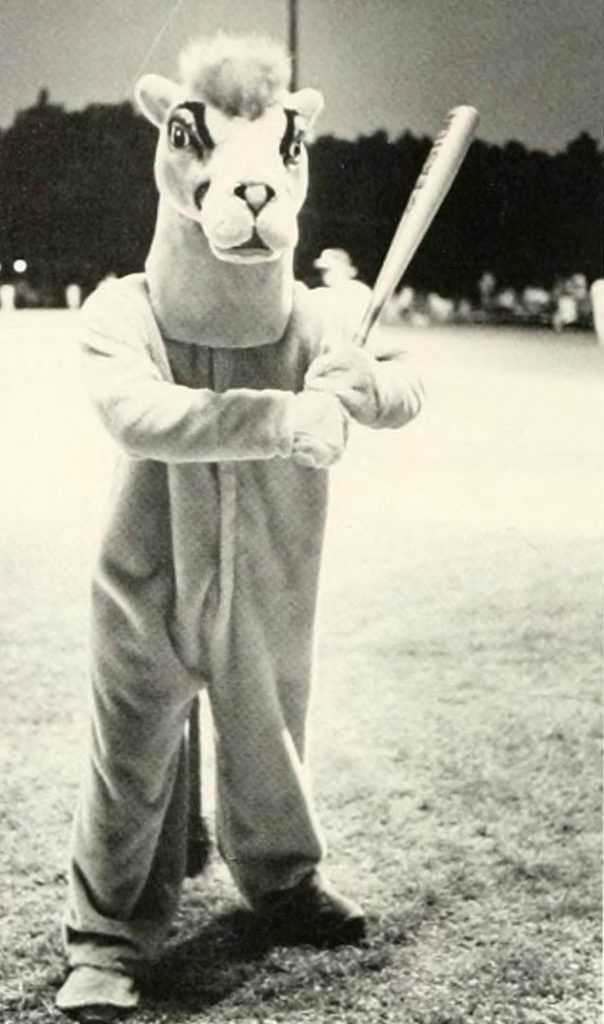
The Campbell Camel. From the 1983 Pine Burr yearbook.
Even the humans and human-like creatures are clothed in oversized costumes these days. Wake Forest University’s Deacon is a dapper chap:
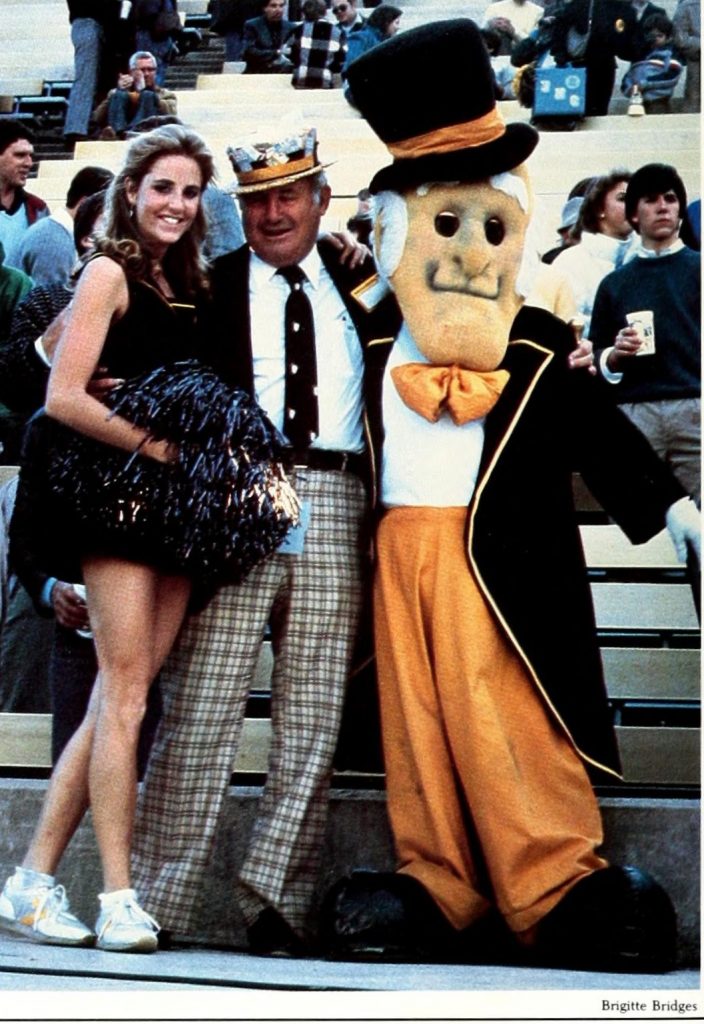
Wake Forest’s Deacon poses with fans. From the 1985 Howler yearbook.
In addition to the Demon Deacons and the Blue Devils, North Carolina boasts a number of other spiritual mascots: North Carolina Wesleyan’s Battling Bishops, Belmont Abbey’s Crusaders, and Guilford College’s Quakers. Meredith College’s teams are known as the Avenging Angels (formerly just the Angels). While Elon University’s mascot is now the Phoenix, before 2000 they were the Fighting Christians:
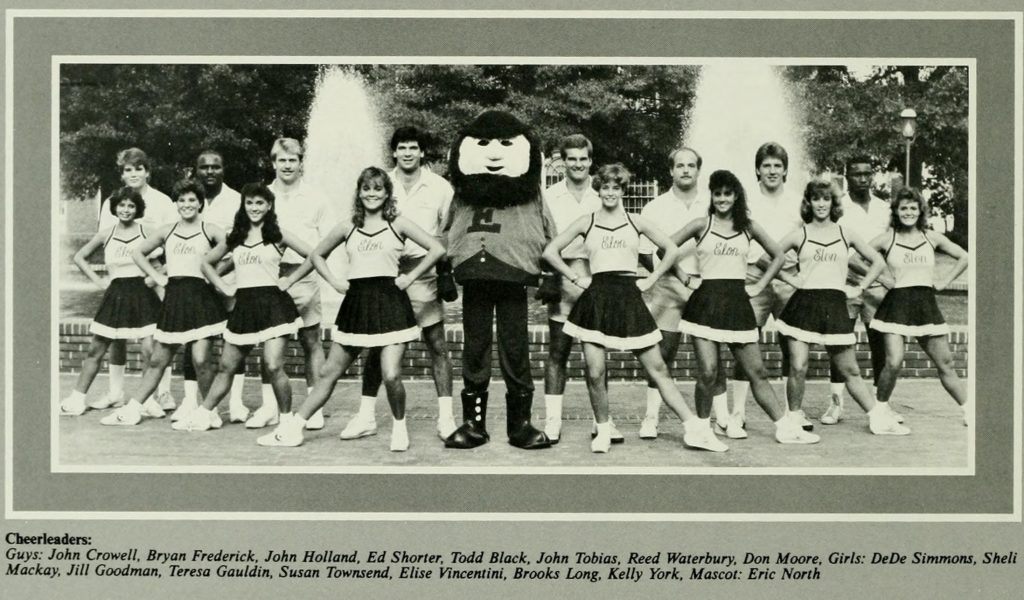
The Elon Fighting Christian mascot with cheerleaders. From the 1986 Phi Psi Cli yearbook.
Two schools break with the animal/human tradition in North Carolina. The Brevard College Tornadoes and the Louisburg College Hurricanes. Weather phenomena mascots are always difficult to pull off. I couldn’t find one for Brevard, but Louisburg, which currently has a bird mascot, had “Louie” up until 2006:
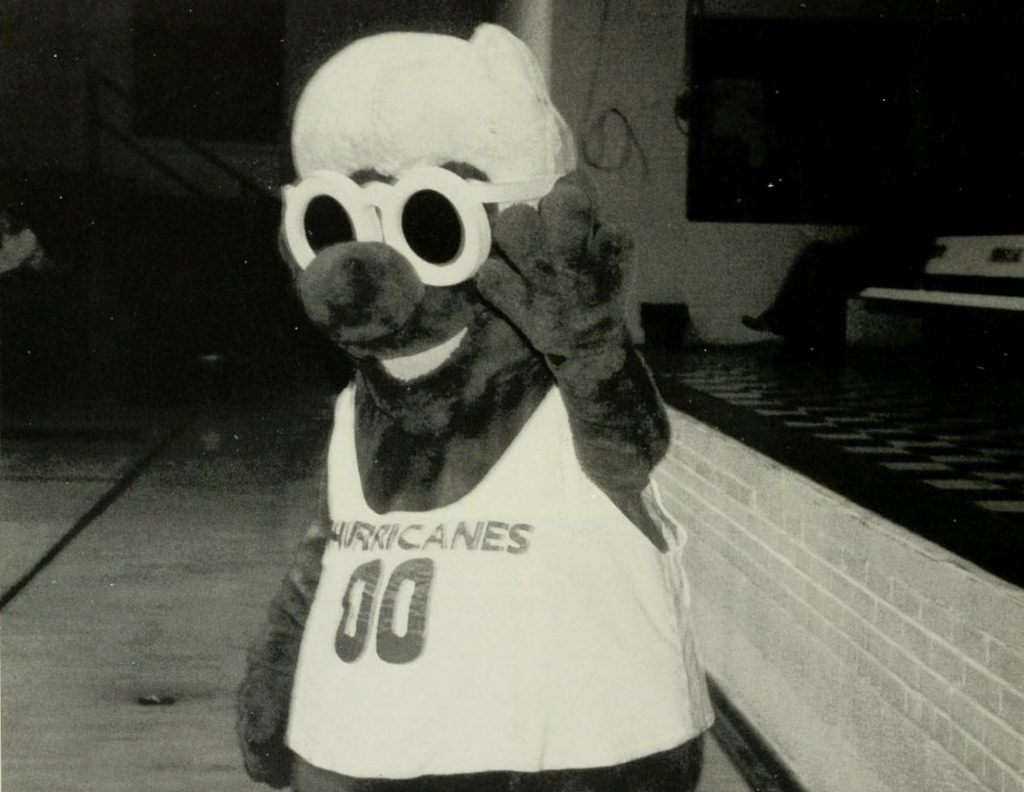
Louie, the former Louisburg College Hurricanes mascot. From the 1996 The Oak yearbook.
Who knows when the next mascot sea change will happen. Below is a list of mascots in North Carolina; let us know if we got anything wrong. Which one is your favorite?
| School |
Mascot |
Notes |
| Appalachian State University |
Yosef the Mountaineer |
First appeared in the yearbook in 1942 |
| Barton College |
Bulldog |
|
| Belmont Abbey College |
Crusader |
|
| Bennett College |
|
Known as the Bennett Belles |
| Brevard College |
Tornado |
|
| Campbell University |
Fighting Camels |
The Hornets in the 1920s-1930s |
| Catawba College |
Catawba Indian |
|
| Chowan University |
Hawks |
The Braves until 2006 |
| Davidson College |
Wildcats |
Also a bulldog (1929) and a bobcat (1939) |
| Duke University |
Blue Devil |
|
| East Carolina University |
Pirates |
Formerly Pee Dee the Pirate |
| Elizabeth City State University |
Vikings |
|
| Elon University |
Phoenix |
The Fightin’ Christians until 2000 |
| Fayetteville State University |
Broncos |
|
| Gardner-Webb University |
Runnin’ Bulldogs |
|
| Greensboro College |
The Pride |
Formerly the Hornets |
| Guilford College |
Quakers |
|
| High Point University |
Panthers |
|
| Johnson C. Smith University |
Golden Bulls |
|
| Lees-McRae College |
Wily the Bobcat |
|
| Lenoir-Rhyne University |
Joe and Josie Bear |
|
| Louisburg College |
Hurricanes |
|
| Mars Hill College |
Mountain Lion |
|
| Meredith College |
Avenging Angels |
Formerly the Angels |
| Methodist University |
Eagles |
|
| Montreat College |
Cavaliers |
|
| Mount Olive College |
Trojans |
|
| North Carolina A&T |
Aggie Dog (Bulldog) |
|
| North Carolina Central University |
Eagles |
|
| North Carolina State University |
Wolfpack |
|
| North Carolina Wesleyan College |
Battling Bishops |
Formerly the Circuit Riders |
| Peace College |
Pacer |
|
| Pfeiffer University |
Falcons |
|
| Queens University of Charlotte |
Rex the Royal |
|
| Saint Augustine’s University |
Mighty Falcons |
|
| Salem College |
Spirits |
|
| Shaw University |
Bears |
|
| St. Andrews University |
Knights |
|
| UNC Asheville |
Bulldog |
|
| UNC Chapel Hill |
Rameses the Ram |
Also known as the Tar Heels |
| UNC Charlotte |
Norm the Niner |
|
| UNC Greensboro |
Spartans |
|
| UNC Pembroke |
Braves |
|
| UNC Wilmington |
Seahawk |
|
| UNC School of the Arts |
Fighting Pickle |
|
| UNC School of Science and Math |
Unicorn |
|
| Wake Forest University |
Demon Deacons |
|
| Warren Wilson College |
Owls |
|
| Western Carolina University |
Catamount |
“Paws” |
| Wingate University |
Bulldog |
|
| Winston-Salem State University |
Ram |
|
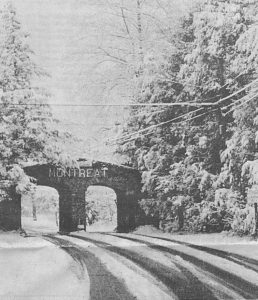
Front cover of The Aletheia, February 3, 1978. Photo by Bruce Parrish.
We have worked with Montreat College to digitize 529 issues of their student newspaper, now available at DigitalNC. The newspapers here range from 1937-2016, starting with The Dialette (in 1937) and ending with The Whetstone (the newspaper’s current name).
Montreat College, a Christian liberal arts college affiliated with the Presbyterian Church, was founded in 1916 in Montreat, N.C., in the Blue Ridge Mountains. From 1959-1995, it was known as Montreat-Anderson College. Today, along with the 43-acre main campus in Montreat, the college has an 89-acre campus in Black Mountain as well as campuses in Asheville, Black Mountain, and Charlotte, N.C.
The student newspapers on DigitalNC trace the development of Montreat from its beginnings as a women’s college for teacher training; to the admission of their first male students in 1958; and through the subsequent growth of the college. The issues offer a glimpse of campus life, discussions about the integration of faith and the college experience, and various musical and arts events taking place in the area, such as a visit from Christian rap group D.C. Talk in January 1990.
Find out more about Montreat College at their website or their contributor page; or see our previous blog posts about Montreat College yearbooks and May Day celebrations. You can also search the North Carolina Newspapers Collection to find newspapers from other N.C. schools and towns.
A couple of weeks ago UNC’s university archivist tweeted about finding articles in the Daily Tar Heel about a flu epidemic on UNC’s campus in early 1941. Intrigued – and figuring it was in no way contained to UNC’s campus – we did some digging in other newspapers on our site to find other stories about the epidemic’s impact on other campuses in NC at the time. A topic that is feeling quite relevant now, we found mentions scattered throughout the papers in January and February 1941 (for context – what would have been a year that started with an epidemic for these students and ended with the country involved in a World War) about how students were reacting to this sudden uptick in the flu.
Several campuses seemed to have a newfound appreciation for the infirmary, with an “Ode the Infirmary” published in Mars Hill College’s student newspaper.
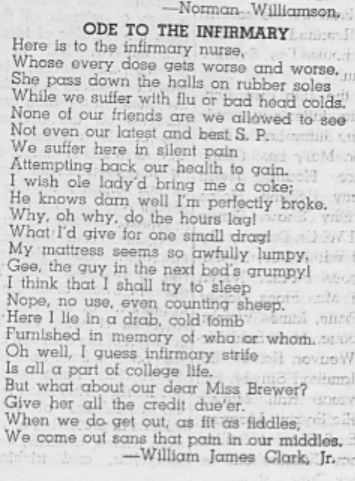
From the Montreat College paper, a look “Through the Infirmary Door”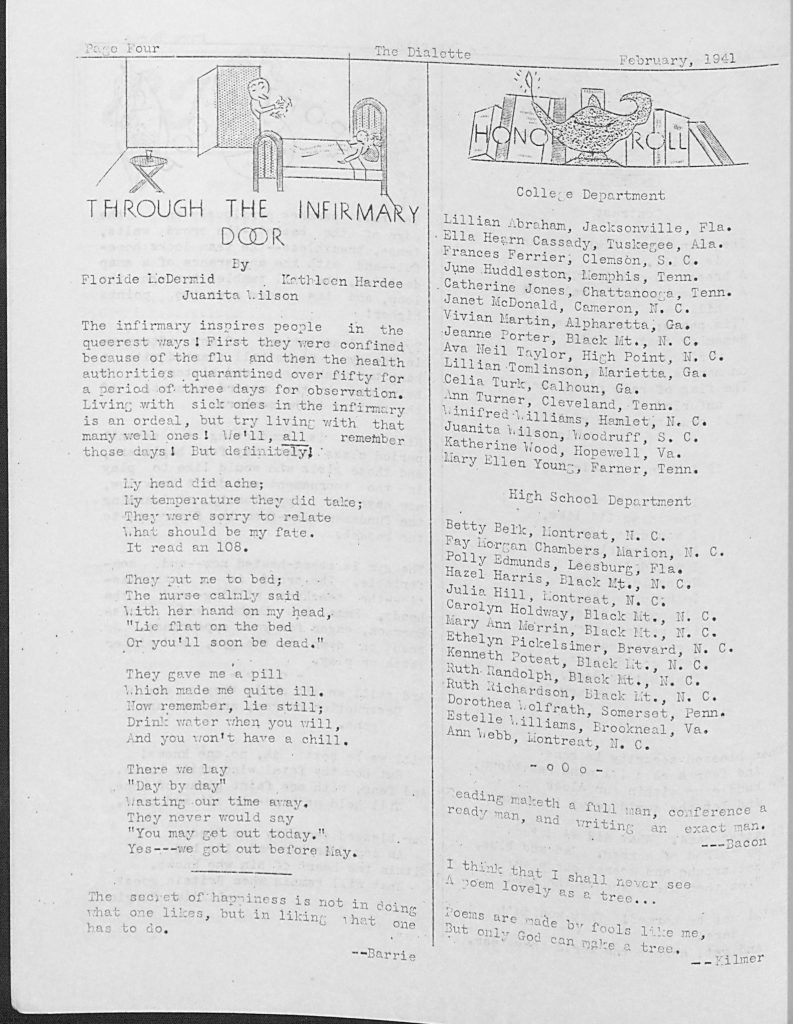
The social lives of the Belles of Saint Mary’s were put on hold for the flu that struck campus in mid January. Their society pages in their student newspaper detail such and the following flurry of activity as they were able to come out of quarantine.
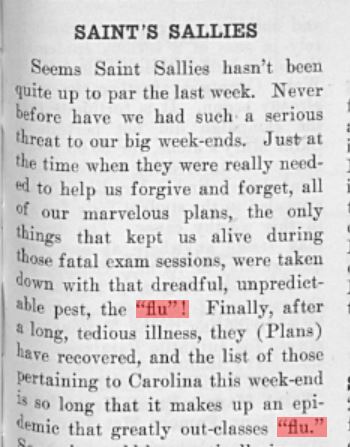
At the high school level, reports of basketball games and academic competitions were cancelled or put on hold as school was cancelled for several days to prevent the spread of the flu virus. Both the students at Greensboro High School and High Point School reported such.
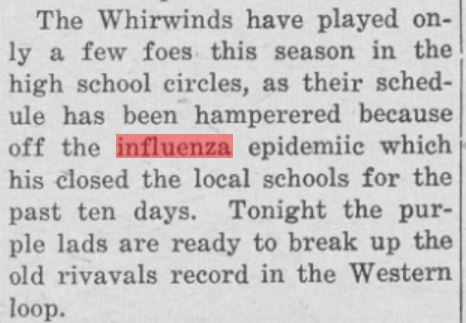
Other social and academic events were also cancelled – all citing the epidemic as the cause.
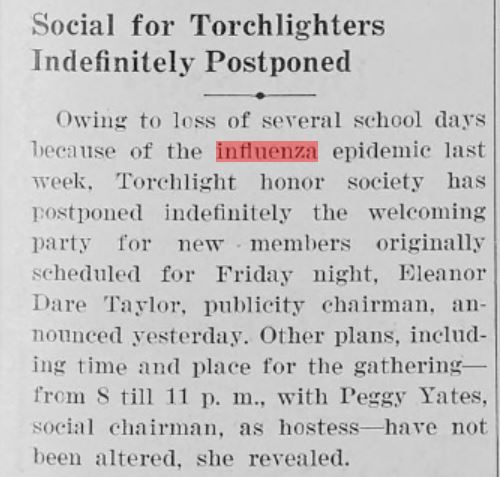
Other college campuses did not seem to have large effects from the flu but did report on students who were travelling from other areas of the state who then had to quarantine upon arrival on campus. For example, in an article in Montreat College’s student paper, they reported on students who had to quarantine upon arriving back to campus.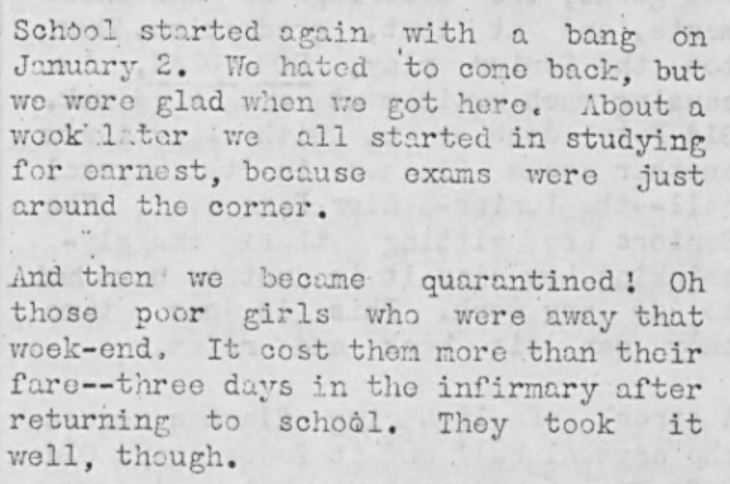
All in all, nothing quite as dramatic as what appears to have happened at UNC was going on at other North Carolina schools, perhaps another echo of what has happened in 2020. A brief perusal of the community papers from the time show that the flu epidemic was something affecting the whole state for sure, with mentions of it in papers from as far east as Beaufort, NC and as far west as Franklin, NC in Macon County.
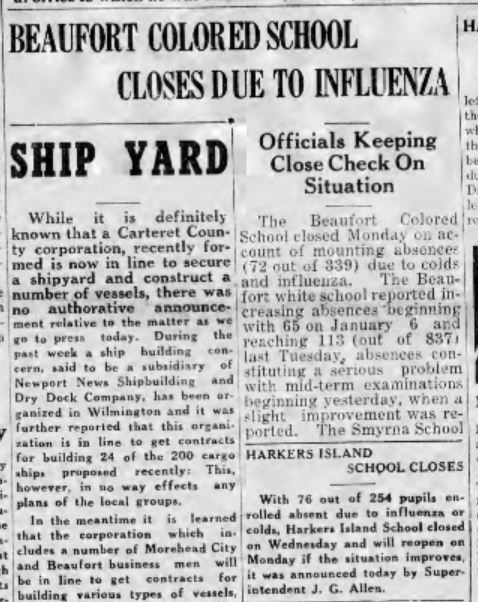
Clipping from The Beaufort News , January 16, 1941
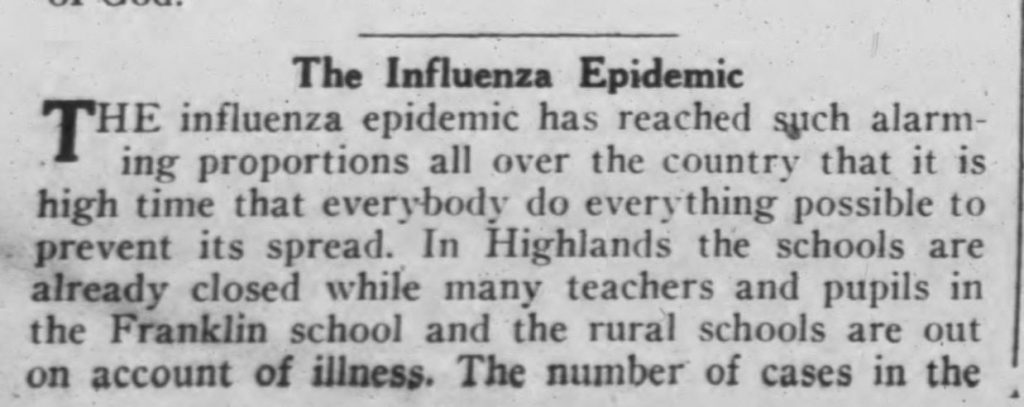
Clipping from The Franklin press and the Highlands Maconian, January 23, 1941
Several articles note that this particular epidemic was moving from the western part of the state to the eastern part of the state, which was apparently unusual, and overall cases had been fairly mild (which likely explains in part why it rarely pops up as an event in history).
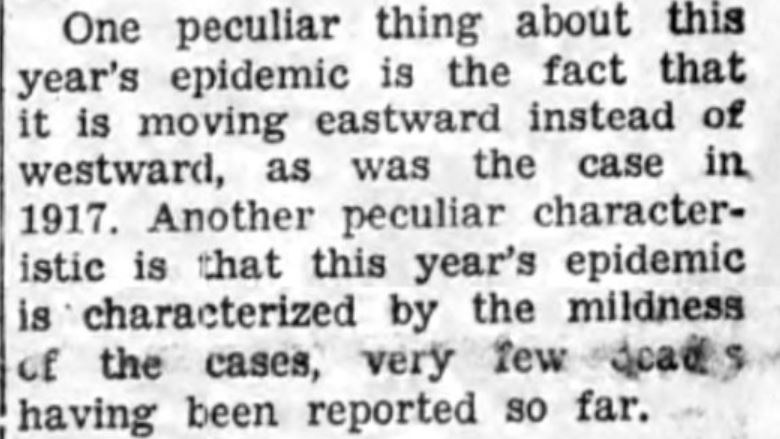
January 22, 1941 issue of the State Port Pilot discussing the effects of the flu across the state.
To explore our over 1 million pages of digitized newspapers yourself, visit our North Carolina Newspapers page and read here about how colleges in NC responded to the 1918 Spanish Flu pandemic.
Today is May Day, the midpoint between the spring equinox and the summer solstice. In pre-Christian Europe, May Day celebrated springtime fertility with festive community gatherings, and the tradition has continued into the Christian era. Later, European settlers to America brought May Day celebrations across the Atlantic.
Here in North Carolina, May Day was especially celebrated on college and university campuses by crowning a May Queen and sometimes even by dancing around a May pole.
The May Queen and her court at Bennett College. From the 1963 edition of the Bennett Bell, the Bennett College yearbook.
When Montreat College was a women’s college, students sometimes dressed as both male and female members of the May Court. From the
1936 edition of
The Sundial, the
Montreat College yearbook.
May pole dancers at Montreat College would weave over and under each other until the ribbons were tightly braided around the May Pole. From the
1936 edition of
The Sundial, the
Montreat College yearbook.























